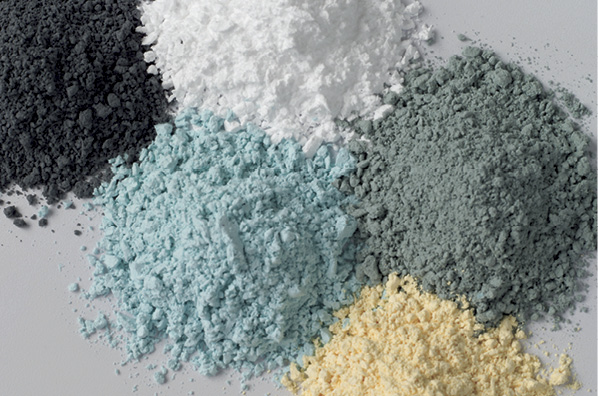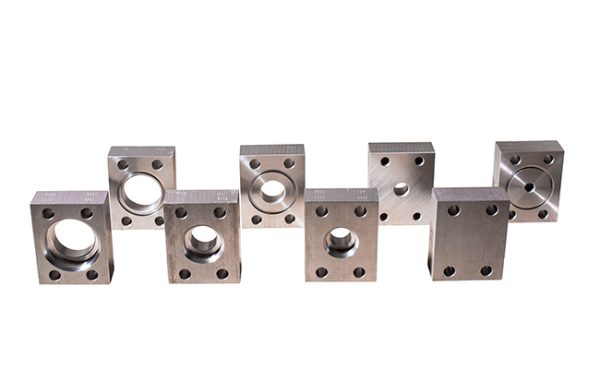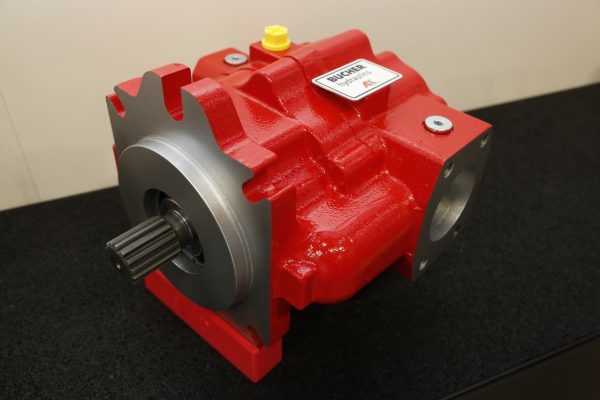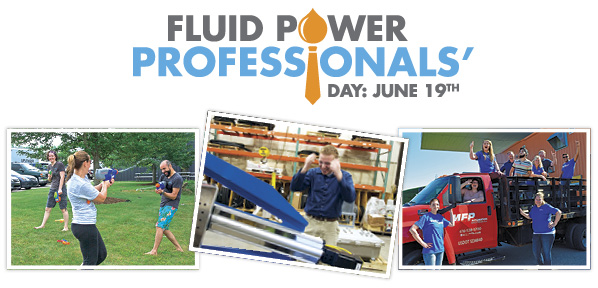Demystifying Chemical Compatibility of Seals and Fluids
By Lucy Heyduk, Material Development Specialist, and Tim McCulfor, Material Development Manager, Trelleborg Sealing Solutions

The chemical compatibility of a seal with fluids in a system is critical to obtaining a reliable, long-lasting seal. Unfortunately, the selection process can be extremely challenging, especially if based solely on chemical compatibility charts.
Reactions between the polymers used in seals and the chemicals in fluids vary greatly. For example, certain chemicals “attack” polymers, breaking chemical bonds and degrading the polymers’ properties. In some cases, chemicals extract ingredients from the polymer, leaving it weak and/or lacking important functional properties. Other chemicals can permeate a polymer and cause swelling. This can be both an advantage and a disadvantage, further complicating seal specification.
In all cases, it’s important to understand the effect chemicals have on seals and to choose a material that’s compatible with the chemical to be sealed.
Here are some considerations for choosing the right material for a given chemical sealing application:
Elastomers
The broadest classification of polymers is between elastomers and plastics. We’ll first look at elastomers, which can be thermoplastic or thermoset.
Thermoplastics are able to be re-melted after polymerization, so they are molded with a melt-processing operation such as injection molding of extrusion. Thermosets react or crosslink during molding, so they are usually compression molded or extruded.
Elastomers are characterized by their elastic properties. With some exceptions, they are generally very resilient and excellent for seals that will come into contact with fluids.
However, some elastomers are particularly prone to swelling (the fluid is absorbed by the material by diffusion), and others are prone to shrinkage (plasticizers and additives dissolve in the media and are extracted from the material). All these variables make the selection process quite complex, so you should work with an expert polymer or seal supplier to identify the optimum material for a given application.
In general, the interaction between elastomer and chemicals follows the rule that like dissolves like. For example, most polar polymers dissolve in polar solvents and rarely dissolve in non-polar solvents (and vice versa). Thus, EPDM-based seals are not recommended for sealing in a system designed to hold a petroleum-based product (both are non-polar) where high swell is expected. Conversely, an EPDM seal is well suited for sealing a system involving water, which is polar.
Commonly applied in fluid power systems, as well as oil and gas applications, automotive manufacturing, and medical devices, EPDM seals are ideal for challenging applications. In fact, EPDM compounds are very useful for the oil and gas and related markets, as they provide outstanding resistance to high-temperature steam.
The degree of swelling can be predicted using solubility parameters. If the sealed fluid has a solubility parameter close to that of the elastomer, the attraction will be high, resulting in swelling. The degree of swell decreases when the differential between the solubility of the elastomer and the surrounding media increases.
The seal swells due to a diffusion gradient that is produced between the inside of the elastomer and the fluid outside. These define the elastomer’s rate and absolute swell. The absolute swell is defined as the amount of swell that occurs against time for a particular situation. No matter how thick the elastomer, it should never swell more than this particular amount within a specified timeframe.
During specific tests, swell can be calculated, and in certain applications, a degree of swelling can be an advantage to the sealing function. This is a specialist area of seal specification, and such applications should be reviewed with an elastomer or seal supplier with a full understanding of this process and the compounds involved.
The chemical interaction between elastomer compound and media is called chemical attack. There are large numbers of chemical species that can degrade elastomers. The severity depends on the agent and the chemistry of the elastomer being attacked.
The degradation may occur by the fluid attacking the polymer backbone itself (e.g., braking or forming additional cross-link or unsaturation) or by interaction with compounding ingredients (e.g., oxidation of fillers). The chemical attack will manifest itself by loss of mechanical properties, hardening, and surface degradation.
Some elastomer types commonly used in seals and their chemical compatibility behavior:
EPM/EPDM. A non-polar synthetic polymer,
Ethylene-Propylene Rubber (EPM) is a copolymer of
ethylene and propylene; Ethylene Propylene Diene Rubber (EPDM) denotes a terpolymer of ethylene, propylene, and non-conjugated diene.
Recommended for:
- Hot water and steam
- Brake fluids
- Alkalis and acids
- Ketones and alcohols
- Sunlight and ozone
Not recommended for:
- Petroleum oils
- Mineral oils
- Fuels
NBR. Nitrile Rubber (NBR) is considered the workhorse of the rubber industry. The acrylonitrile content (ranging from 18% to 50%) determines the elastomer’s fluid resistance.
Recommended for:
- Aliphatic and aromatic hydrocarbons
- Oils
- Gasoline
- Greases
- Hydraulic fluids
Not recommended for:
- Chlorinated hydrocarbons
- Ketones and esters
HNBR. Obtained by either partial or complete hydrogenation of acrylonitrile-butadiene rubber, the generic name for this substance is Hydrogenated Nitrile Rubber (HNBR). The main difference between HNBR and NBR is the highly saturated backbone that results in an improvement in resistance to heat and chemical attack.
Recommended for:
- Hot water and steam
- Oils and fuels
Not recommended for:
- Polar solvents
- Strong acids
- Chlorinated hydrocarbons
FKM. The chemical resistance of Fluoroelastomer (FKM) is determined by the fluorine content (ranging from 65% to 70% percent) and the type of monomers used. There are five distinct classes of FKM materials based on the types of monomers used in the polymerization process.
Recommended for:
- Aliphatic and aromatic hydrocarbons
- Gasoline, gasoline/alcohol blends
- Chlorinated solvents
Not recommended for:
- Ketones
- Strong bases
- Amines
FVMQ. Fluorosilicone Rubber (FVMQ) is a modified silicone rubber that has many attributes of silicone rubber, but with improved chemical resistance.
Recommended for:
- Dilute acids and alkalis
- Petroleum oils
- Hydrocarbon fuels
Not recommended for:
- Alcohols
- Ketones
- Amines
FFKM. Perfluoroelastomers, sometimes called an elastomeric version of PTFE, are the highest performance group of elastomers. They have a fully fluorinated backbone and the broadest possible chemical resistance. Seals made from FFKM are used in extreme chemical environments like chemical processing and transportation, oil and gas, and semiconductor markets. Some grades are not resistant to steam, and some have reduced amine and base resistance.
Recommended for:
- An extremely broad range
of chemicals
Not recommended for:
- Molten alkali metals
Plastics
Plastics can also be thermoplastic or thermoset. Generally speaking, they are more rigid than elastomers, but their behavior can range from very ductile to brittle, and their chemical resistance varies greatly.
The following are some plastics used in seals with descriptions of their chemical compatibility behavior. They all have good compatibility with water and oils.
PTFE. Polytetrafluoroethylene (PTFE) has resistance to virtually all media. There are only a few chemicals in extreme conditions that can attack PTFE, including molten alkali metals, gaseous fluorine at high temperatures and pressures, and a few organic halogenated compounds. In addition, PTFE has a wide usable temperature range and low friction, making it a premiere seal material.
As PTFE has no elastic capabilities, these types of seals are usually used in conjunction with an elastomer energizer or spring. Ensuring this combination of seal and energizer are fully compatible to system chemicals can be difficult and requires suppliers to have a full understanding of material properties.
PEEK. Polyetheretherketone (PEEK) has excellent high-temperature properties and good chemical resistance. PEEK excels in high temperature steam, making it an excellent choice for oil and gas applications.
UHMWPE. Ultra-high molecular-weight polyethylene (UHWPE) is extremely tough and has good friction and wear properties. It performs well in water-based fluids and most oils, but can be affected by some aggressive chemicals.
Factors That Can Affect Compatibility
The temperature of the sealing application is an important consideration when choosing a sealing material. Both high and low temperature fluctuations change properties, so the polymer must remain flexible enough to seal at low temperatures while maintaining structural integrity at the highest exposure temperature.
Keep in mind that the temperature can also affect chemical resistance. Chemical activity increases with temperature, so a seal material that is compatible with a chemical at room temperature may be attacked at higher temperature. In a dynamic seal, frictional heat generation can cause the actual temperature at the seal interface to be higher than the bulk fluid temperature, so this can be an important consideration.
Some seal applications have continuous contact with chemicals and others have only intermittent contact. Chemical attack is a time-dependent process—some materials can resist chemicals when exposed for a short time, but are not recommended for long-term exposure.
Chemical Compatibility Charts
Chemical compatibility charts are useful to determine the generic susceptibility of general classes of polymers with certain chemicals. They are usually compiled from property-change data of test specimens immersed in the specific chemical.
The testing may be done at different temperatures, but most charts just list results from room-temperature exposure. Thus, this information can help manufacturers rule out materials that are clearly incompatible, but determining the compatibility of a specific material-chemical pair for an application requires more research.
In addition, compounds within a type can be engineered to resist chemicals specific to an industry application. Although a type of material may, in general, not work well with a particular chemical, an engineered grade may.
Working closely with an experienced seal supplier is perhaps the best way to ensure specification of a fully compatible polymer. The supplier will be familiar with their particular materials, have tested them for resistance, and have experience applying these materials in specific applications. Look for a seal supplier that fully understands the complexities of combining polymers with fluids. Ideally, the supplier will have experience using a specific polymer in the application you are working on so they can discern exactly how it will behave in that system.
Lucy Heyduk is a Material Development Specialist for Trelleborg Sealing Solutions. She was born in Poland, where she graduated from University of Wrocław with a Master’s degree in chemistry. She has more than 30 years of experience in the rubber industry specializing in compound development for specific market segments like automotive and aerospace. She has been with Trelleborg Sealing Solutions in her current position for 14 years.
Tim McCulfor is the Material Development Manager for Trelleborg Sealing Solutions (tss.trelleborg.com). He graduated from Michigan State University with a Bachelor of Science degree in chemical engineering and has more than 30 years of experience in the plastics industry doing compound development of thermoplastic and thermoset-based materials.







